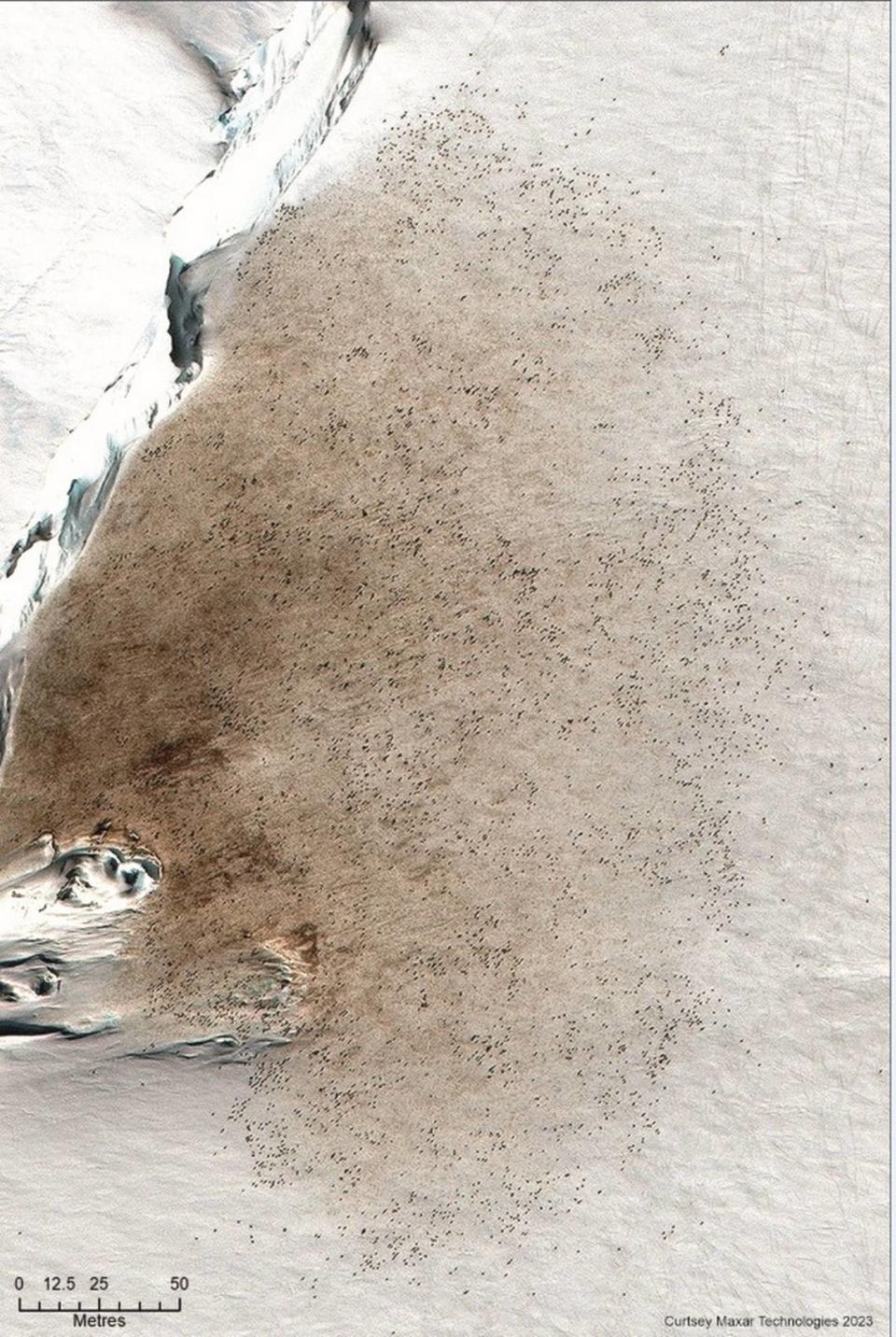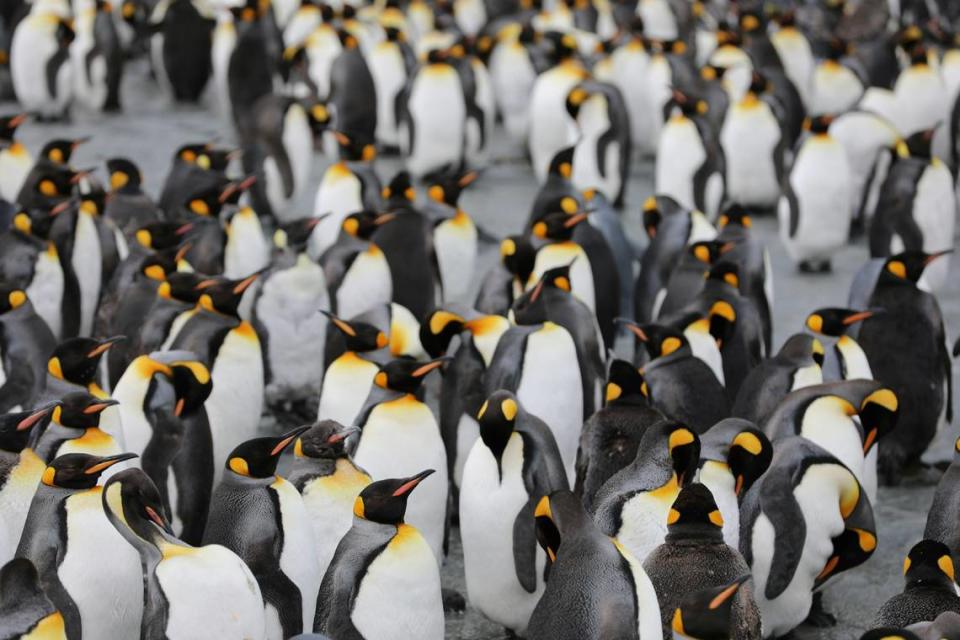Poop stains spotted from space help reveal colonies of ‘iconic’ Antarctic species
While orbiting high in the atmosphere over Antarctica, satellites snapped photos of the barren, white terrain below.
The high-resolution images contained a series of clearly distinguishable “brown stains” atop the snow and ice.
These dark marks, scientists determined, were accumulations of excrement — signs of life.
The piles of poop led to the discovery of four previously unknown colonies of emperor penguins, a species threatened by climate change, according to a Jan. 24 news release from the British Antarctic Survey (BAS). This imaging process is commonly used by scientists to locate penguins since they typically breed in inaccessible environments.

The four new colonies were found thousands of miles apart — along the coast of Antarctica — bringing the total number of known colonies on the continent to 66.
Emperor penguins, the largest of all penguin species, live only in Antarctica, where their total population is estimated to be below 300,000, according to the World Wildlife Fund.
“These newly identified locations fill in almost all the gaps in the known distribution of these iconic birds,” Peter Fretwell, a BAS scientist, said in the release.
Discovering these new communities comes at a critical time for the species, scientists said.

Fluctuating sea ice conditions have forced multiple colonies to relocate to more stable ice sheets to breed.
Last year, as a result of the depletion of sea ice, a “catastrophic breeding failure” was observed in emperor penguins, scientists said.
“All except one of these colonies are small with less than 1,000 birds, so finding these new colonies makes little difference to the overall population size,” Fretwell said. “In fact, it is overshadowed by the recently reported breeding failures.”
The continent has experienced a record loss in sea ice since 2016, scientists said. Since 1981, an area of ice larger than Greenland has been lost.
Metal detectorists stumble on ancient sacrificial site in dry lake. See the offerings
Divers find ‘fascinating’ artifacts from 19th century shipwrecks off Canada, video shows
‘Metallic’ winged creature — with parasitic young — is a new species. See it

